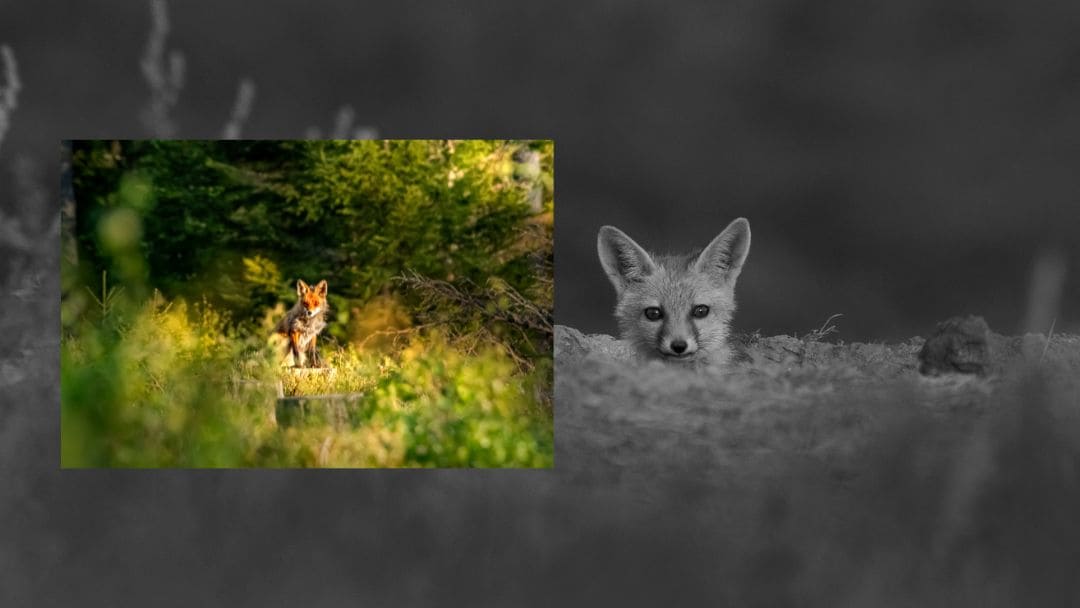Welcome to Fox Facts Hub, your one-stop shop for everything Fox-related! Are you curious about these clever canines? In this comprehensive guide, we’ll unveil the fascinating world of foxes, exploring their remarkable adaptations, diverse species, and cultural significance.
Fox Fun Facts: Ecological Powerhouses and Indicators of Health
Foxes are more than just cute faces with bushy tails. They play a vital role in maintaining healthy ecosystems worldwide. These cunning creatures are predators, helping to control populations of rodents and small mammals.
This keeps these prey species in check, preventing them from overgrazing or spreading diseases.
Foxes are also considered biodiversity indicators. Their presence (or absence) in an area can be a good sign of the overall health of the environment. If there are plenty of foxes around, it suggests a healthy balance exists within the ecosystem.
A World of Foxes: Unveiling the Diverse Species
Did you know there are over 12 different species of foxes scattered across the globe? Each species has unique adaptations that allow them to thrive in their specific habitat. Let’s meet some of the most fascinating fox characters:
- Red Fox (Vulpes vulpes): This sly and adaptable species is the most common fox worldwide. They can be found in forests, grasslands, mountains, and even urban areas!
- Arctic Fox (Alopex lagopus): Built for the harsh Arctic climate, the Arctic fox boasts a thick white coat that provides excellent camouflage in the snowy landscape. Their short ears and stubby legs help them conserve heat.
- Fennec Fox (Vulpes zerda): The world’s smallest fox species, the fennec fox, is a desert dweller known for its enormous ears, which help radiate body heat. Their large ears also improve their hearing, allowing them to detect prey burrowing underground.
- Gray Fox (Urocyon cinereoargenteus): This North American fox is a skilled climber, thanks to its partially retractable claws. They often make their dens in hollow trees or abandoned dens of other animals.
Even More Fox Fun! But wait, there’s more! The fox family tree has many fascinating branches. Here are some additional fox species you might encounter on your global travels:
- Bengal Fox (Vulpes bengalensis): Found throughout the Indian subcontinent, this adaptable fox thrives in grasslands, scrublands, and even some urban areas.
- Blanford’s Fox (Vulpes cana): Living in the deserts and rocky areas of the Middle East and Central Asia, Blanford’s fox has excellent hearing and exceptional climbing abilities.
- Cape Fox (Vulpes chama): This fox is endemic to southern Africa, where it makes its home in arid regions and along coastlines.
- Corsac Fox (Vulpes corsac): Ranging across the grasslands of Central Asia and Eastern Europe, the corsac fox has a reddish-brown coat that camouflages it perfectly in its open habitat.
- Island Fox (Urocyon littoralis): This unique fox species is found only on the Channel Islands off the coast of California.
- Kit Fox (Vulpes macrotis): Dwelling in the arid grasslands of western North America, the kit fox has large ears that help it dissipate heat and exceptional hearing to locate prey underground.
- Pale Fox (Vulpes pallida): Perfectly adapted to the Sahara Desert, the pale fox has a light-colored coat that reflects the scorching sun and oversized ears to radiate heat.
- Rüppell’s Fox (Vulpes rueppellii): This fox inhabits the savannas and grasslands of sub-Saharan Africa. They are known for their excellent eyesight and opportunistic feeding habits.
- Swift Fox (Vulpes velox): Once widespread across the Great Plains of North America, the swift fox is an endangered species due to habitat loss. They are known for their speed and agility when hunting prey.
- Tibetan Sand Fox (Vulpes ferrilata): The highest-dwelling canid species, the Tibetan sand fox makes its home on the Tibetan Plateau at elevations exceeding 15,000 feet! Their thick fur keeps them warm in the frigid temperatures.
Beyond Cuteness: Unveiling Fox Adaptations
Foxes are masters of adaptation, with physical and behavioral traits that ensure their survival in various environments. Here are some of their most impressive adaptations:
- Sharp Senses: Foxes boast incredible senses of smell, hearing, and vision. Their keen sense of smell helps them locate prey hidden underground, while their excellent hearing allows them to detect even the slightest sound.
- Agile Bodies: Foxes are built for agility and stealth. Their slender bodies and flexible spines allow them to navigate through dense undergrowth and pounce on unsuspecting prey.
- Clever Hunters: Foxes are intelligent creatures with a knack for problem-solving. They employ various hunting techniques, from stalking prey to digging out burrows. They are also opportunistic feeders, scavenging for food when necessary.
Foxes and Urbanization: Interestingly, foxes have adapted to living alongside humans in urban areas. They may scavenge for food scraps and find shelter in abandoned buildings or under decks.
The Intrigue of Foxes: Myths and Cultural Significance
Foxes have captured the human imagination for centuries. In many cultures, they are associated with cunning, intelligence, and adaptability. In some folktales, foxes are portrayed as tricksters or mischievous creatures, while in others, they symbolize good luck and prosperity.
The beautiful red fox has been a popular subject in European folklore for centuries, appearing in stories like Reynard the Fox. In Japanese culture, the kitsune, a mythical fox spirit, can shapeshift and possess magical abilities.
Conservation Efforts: Protecting Our Foxy Friends
Unfortunately, some fox species face threats due to habitat loss, hunting, and persecution. Conservation efforts play a crucial role in ensuring their survival for future generations. Here are some ways you can help:
- Support organizations dedicated to fox conservation.
- Educate others about the importance of foxes in our ecosystems.
- Advocate for habitat protection measures.
By working together, we can ensure that these fantastic creatures continue to thrive in the wild.
Ready to Learn More? This is just a glimpse into the fascinating world of foxes. Fox Facts Hub is your one-stop resource for all things fox-related. Stay tuned for more articles, fun facts, and information on how you can contribute to fox conservation efforts!


